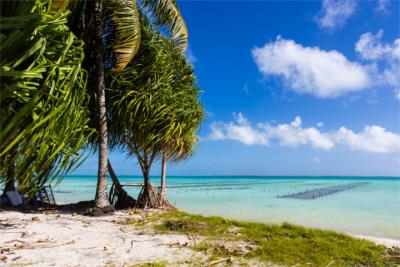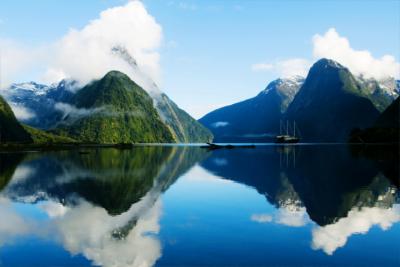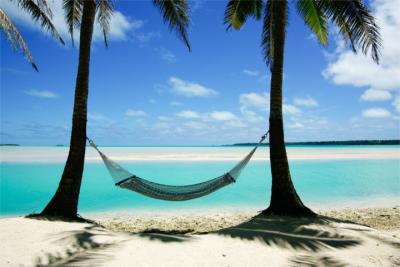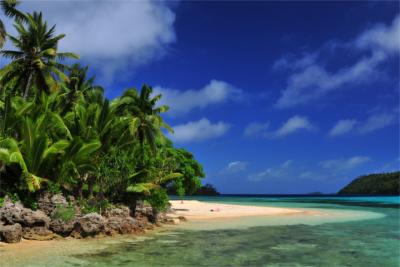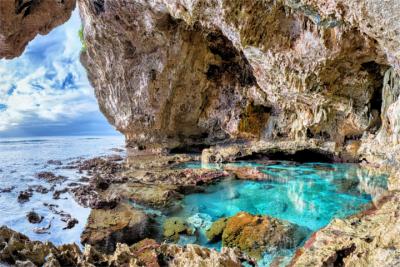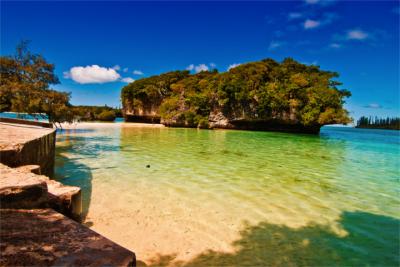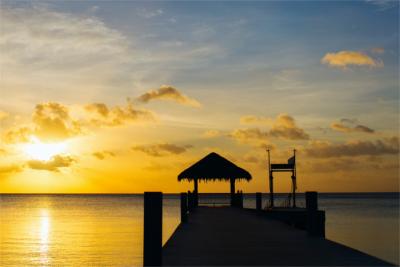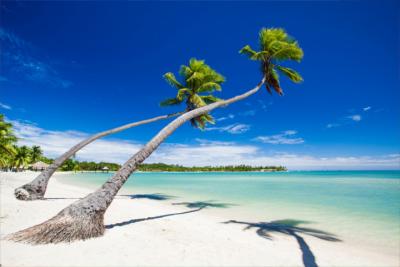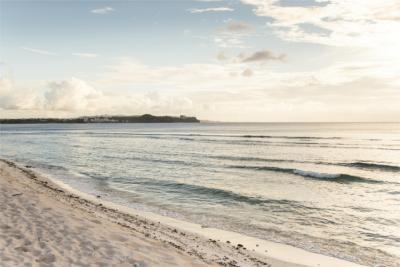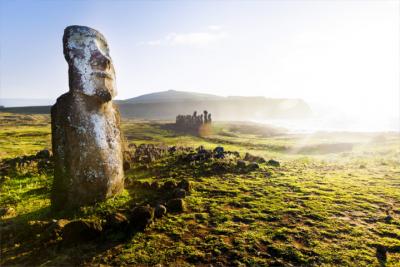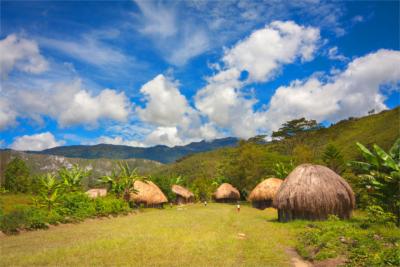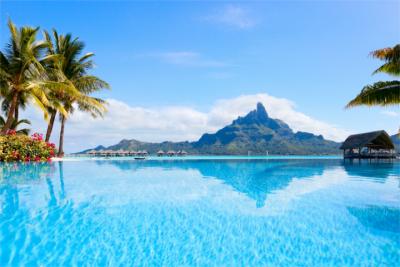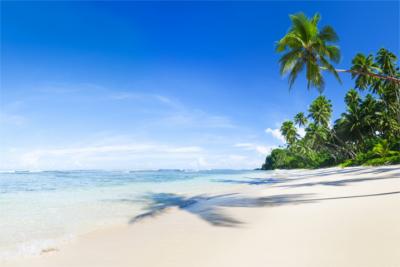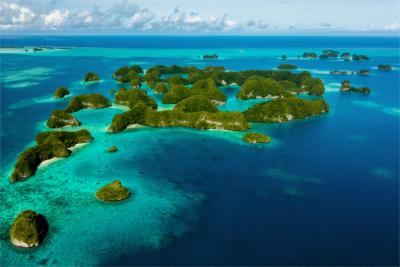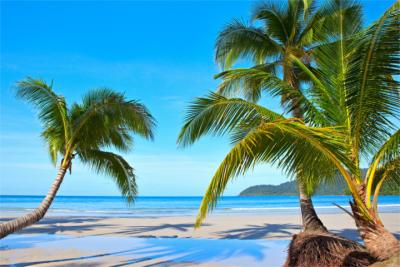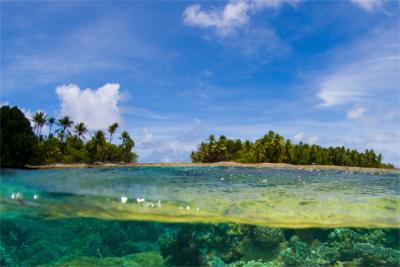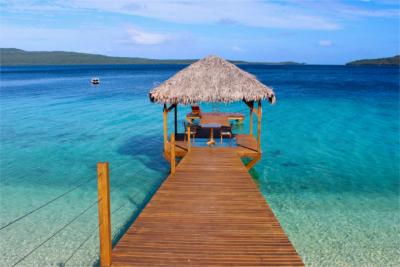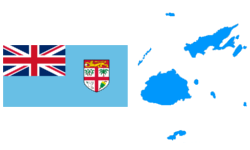Travel Offers
Travelmyne Featureprint
Distance
Fiji - Island Magic in the Blue Sea
The Fiji Islands are by far the most popular travel destination in the South Pacific. Turquoise water, high coconut palms, golden sandy beach and lush tropical forests invite visitors to relax and rest. The hospitality of the Fijian population and the colourful flora perfect Fiji's charm.

Geography - Of deserted islands in the vast sea
They can neither be seen from New Zealand nor from Australia in the west because they are too far away. The Fiji Islands belong to the most isolated islands in the Pacific Ocean. The difference between the oceanic and the continental islands lies in the distance from the mainland. This is connected with their history of origin. While continental islands developed in accordance with the mainland and were cut off by water, oceanic islands arose from the deep sea. Their origin is very similar to that of coral reefs and volcanoes. It is not reported how many islands are in fact part of the Republic of Fiji. The numbers vary between 320 and 400. This is also due to the fact that many islands disappear into the sea and reappear again depending on the turn of the tide. Furthermore, the big and many small islands are scattered over an enormous area and some of them cannot easily be reached. The island Rotuma and the group of the Conway Reef (Ceva-I-Ra) also belong to Fiji. The main island is Viti Levu. It takes up a major part of the Fijian area and contains the capital Suva. Around it you find other bigger islands. The best-known ones are Vanua Levu, Taveuni, Kadavu, Gau and Koro. Besides Suva, the biggest towns are Nasinu, Lautoka, Labasa and Nadi. The climate on the Fiji Islands is usually hot and humid to tropical maritime. Although the temperatures stay more or less the same throughout the year, there are two seasons. In the summer months from November to April, the temperatures are rarely below 30 °C. There is a lot of precipitation during that time and tropical hurricanes (cyclones) occur quite frequently. From May to October, it is winter on Fiji. The weather is pleasant with an average temperature of 26 °C and it does not rain as often as in summer.

Nature - Unique species in a breathtaking island panorama
Most islands belonging to the Republic of Fiji are of volcanic origin. The exception is a number of smaller islands which are remains of former coral reefs. As such they lie on the surface of the water now and can even be inhabited. There are over 1,129 kilometres of coast covered in the finest sandy beach. However, Fiji offers much more than just beach, sun and sea. The islands are characterised by their mountainous panorama and their highest mountain has a height of 1,324 metres. It is called Tomanivi by the locals and towers on the island Viti Levu. Furthermore, about 70 percent of the islands' area is vegetated by thick rainforest. This tropical wild environment alternates with the smooth hills of the grassy landscape and the deep mangrove forests at the coast. The islands display their adventurous side in the middle of the jungle. Fast rivers and streams offer great conditions for kayaking tours, while unique waterfalls make bathing in the natural lakes all the more exciting. Due to its isolated position in the Pacific Ocean, the island group developed its very own flora and fauna. The islands' lakes are populated by numerous freshwater fish such as gobies, milkfish and barramundis. Some of these endemic species do not exist in any other place on earth. This is also true of about 25 of the 150 species of bird which live on the islands. The whistling fruit dove, the red-throated lorikeet, the honeyeater and the long-legged thicket bird can only be watched in Fiji. If you visit the island between November and March, you can enjoy a special natural spectacle. In these months, the green sea turtles come to shore and lay their eggs in the white sand on Fiji's islands. Now it is not long until numerous little baby turtles make their way back into the sea.

Natural sights - The call of the blue lagoon
Beqa Lagoon is part of one of the world's greatest coral reefs. The lagoon is surrounded by a coral reef which is 145 kilometres long and is a real paradise for snorkellers and divers. They can watch colourful schools of fish and rare species like the lionfish at close range here. Even without the reef the lagoon would be a wonderful destination. There is nothing but coconut palms, beach and sea on the island Beqa. No road, car or other sources of noise disturb the pleasant quiet. The lagoon itself can only be reached by boat. A better known destination are the idyllic Yasawa Islands. They served as the shooting location for the classic film "The Blue Lagoon" in 1949 and 1980. On these islands you only find villages lined by palms and gorgeous Pacific beaches. Cruisers cross the waters every day and give travellers a view of the beautiful islands. The third biggest Fijian island Tavenui is also called the "island of the gardens" because it accommodates the greatest population of endemic plants and animals and is characterised by a lush tropical flora. Its beaches are popular starting points for divers. They have the opportunity to discover rare soft corals here. One of the most beautiful Fijian islands is Matangi with its so-called Horseshoe Bay Beach. The island owes its impressive horseshoe shape to its history of origin. Like many other Pacific islands, Matangi is of volcanic origin. This volcano, however, almost disappeared into the sea completely and its crater filled with blue seawater. The 100 hectares of land are one of the most popular Fijian photo scenes now. This is also true of the Kadavu Waterfall on Namenalala. The dragon-shaped island is also called "the uninhabited". Apart from the waterfalls in the deep jungle, the beach and the surrounding reef, you find nothing but quiet and calm on this island.

Culture - Fijian hospitality
The first people already settled on the beautiful south sea islands 3,000 years ago. They came from Melanesia, practised agriculture and lived on fishing and the rearing of pigs. It became less quiet for the inhabitants when the Europeans discovered the islands. Abel Tasman reported on the islands in the Pacific Ocean in 1643, James Cook confirmed his statements in 1771 and finally Jules Dumont d'Urville also reported on the uniqueness of this region. However, it was not before the middle of the 19th century that the first Europeans came to settle on the islands. Shortly afterwards in 1874 Fiji was declared a British crown colony. This state remained unchanged for a long time and Fiji only became independent in 1970. However, this important step towards autonomy did not bring peace. Since 1987 the country calls itself a republic but it is ruled by a military government. Especially the coup in 2006 hit the headlines. The number of tourists fluctuates depending on the country's political situation. Despite these conflicts, Fiji is by far the most popular travel destination in the South Pacific. The republic mostly owes this to its hospitable inhabitants. Their friendly and cheerful nature quickly transfers to the visitors and every guest is welcome. To fully enjoy the island charm, travellers should adhere to the country's conventions. The Fijian people, for example, usually talk quietly. Raising one's voice is interpreted as an expression of anger. Furthermore, the population is very religious. About 55 percent are Protestants and 28 percent are Hindus. Visitors should always wear high-necked clothes in the churches and temples. The population mainly consists of Fijians (57 %) and Indians (37 %). They live on about 110 of the 330 islands. If you want to dive even deeper into Fiji's culture, you should not miss out on a visit to the Fiji Museum in Suva.

Cultural sights - Indian temples and European seaport towns
Since 2013 the Fiji Islands hold a UNESCO World Cultural Heritage - the historical seaport town Levuka on the island of Ovalau. The placid town, which has less than 4,500 inhabitants, emerged in the 19th century and is now considered a prime example of a seaport in the Pacific Ocean. Besides the seaport, the colonial architecture is worth seeing. Tuna is processed in Levuka and exported into all parts of the world to the present day. A sight of a different kind are the sacred caves in the Sigatoga Valley near Naihehe on the island Viti Levu. This sacred attraction is very popular with both the locals and tourists. For a long time the Sigatoga Valley was the dwelling place and shelter of the islands' last native tribes. They took cover from the European conquerors and ended up in Naihehe. The ritual stone slabs and the priestly chambers still bear witness to the islands' occult past. Another extraordinary sight is called Sri Siva Subramaniya. As the name suggests, it is an architectural masterpiece of the Hindus. In fact, the Fijian island Nadi accommodates the greatest Hindu temple in the southern hemisphere. This colourful building is frequently visited by local Hindus but visitors are also allowed to enter as long as they abide by certain rules. Tourists are only allowed into the temple if they are dressed appropriately and leave their shoes at the entrance as tradition demands.

Experience - Relaxation, recreation and the Fijian cuisine
The Fiji Islands are the ideal destination for luxury and recreational holidays. Great weather, the rushing of the sea and a massage are the perfect way of starting the day. Travellers who want to have experienced island life should avoid the big hotels and stay in one of the original bures at the beach instead. In these traditional huts you can still feel the spirit of simple island life and the deep blue sea lies right in front of your front door. Visitors who are travelling in the month of August can take part in one of the most important Fijian festivals. The Hibiscus Festival is the greatest festival on the Fiji Islands and is celebrated in Suva for one week. The bigger towns offer great opportunities for shopping strolls. Popular souvenirs are carvings, coconut shells which are made into artworks, jewellery and pendants made of pearls or traditional clothing such as the tapa dress. Some of these products can be bought tax-free on the islands, for examples watches and cameras. Holidaymakers who want to dive into the islands' culture should go with their gut. Fiji's cuisine is characterised by both Fijian and Indian influences and offers many delicacies. Freshly caught seafood, grilled lobster, exotic fruit and sweet cocktails are on every menu. A typical Fijian dish is kokoda, fish soused in coconut and lemon. The most popular feast is called Lovo. It consists of meat, fish, vegetables and fruit, which are cooked in an earth oven. If you want to enjoy the islands' nightlife after having delicious Fijian food, you do not have to look for long. There are nightclubs in every big town. Most other parties take place in private clubs. Hotels offer temporary memberships.

Activities - The water sports islands
The Fiji Islands are greatly suited for a number of water sports. Divers and snorkellers can pursue their hobbies at more than 40 dive centres. These centres are located near Tavenni and Vanua Levu. Surfers and body boarders feel comfortable in the waves before Natadola on the island Viti Levu and sailors or Jet Ski drivers can explore every single island by sea. You can also do different kinds of water sports on the islands. Tours in a kayak or an inflatable dinghy as well as wild water rafting on the rivers in the jungle are a must for every active holidaymaker. Sport fishing is possible both on the sea and in the islands' lakes. If you have still not had enough, you should take part in a trekking tour over the islands, go on a Jeep safari into the highland or climb Mount Batilamu on Viti Levu. Adventurers who reach the mountain's peak are rewarded with a viewing platform which offers a spectacular view of the island panorama. The national sport of the population is Rugby. In fact, the islanders are part of the international Rugby elite. Football and water sports, especially surfing, are also popular with the locals. If you like it calmer, you can relax and sunbathe at the beaches of the Coral Coast on Viti Levu. Island hopping is particularly popular with younger visitors and can by done by plane, ferry or cruiser.

Information
The best time for travelling the Fiji Islands is between May and October. The cool south-east wind causes pleasant temperatures and there is not a lot of precipitation. From November to April the islands are dominated by the rainy season. If you are planning a journey in that period, you should pay attention to the local weather alert. Fiji has two international airports. They are located near the towns Nadi and Suva. In addition, they have their own airline Fiji Airways, which takes visitors to every island. If you do not want to fly from island to island, you can use the extensive ferry system. The Fiji Island are generally a great destination for a cruise on the Pacific Ocean. The road network for cars is only developed in parts. Tourists have to bear in mind that there is left-hand traffic in Fiji. There are no passenger trains. Instead, people use buses for the local transport on the islands.
Fiji is and will be the ideal destination for romantics. Besides visitors who are looking for relaxation and a fitting recreational programme, the island paradise allures more and more adventurers and active holidaymakers into the thicket of the jungle and the azure blue waves. Water sports, holiday atmosphere and the islands' delicious cuisine make this country the perfect holiday destination when it has already become frosty at home.

